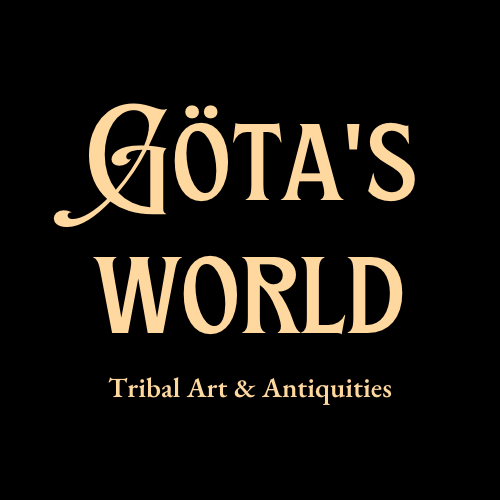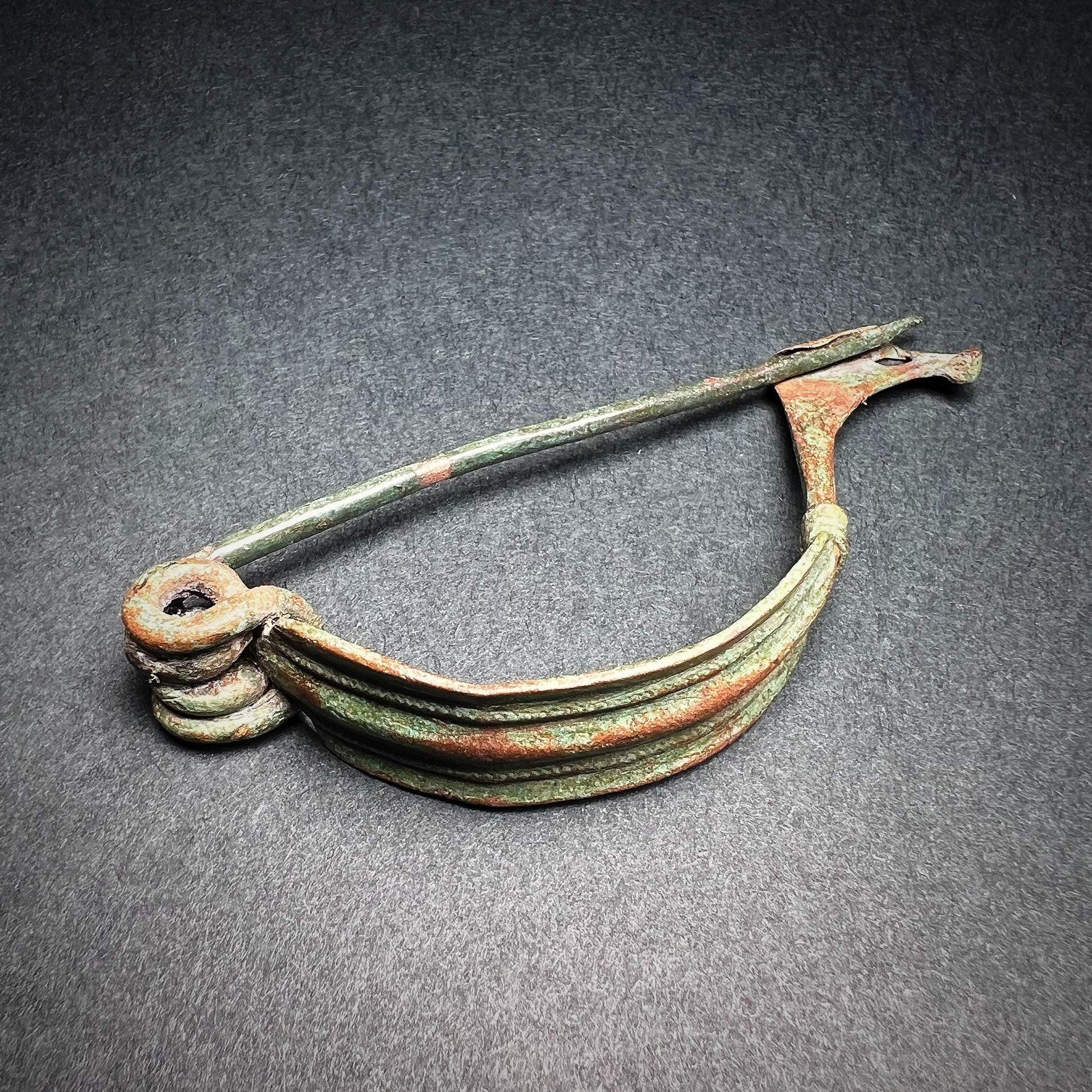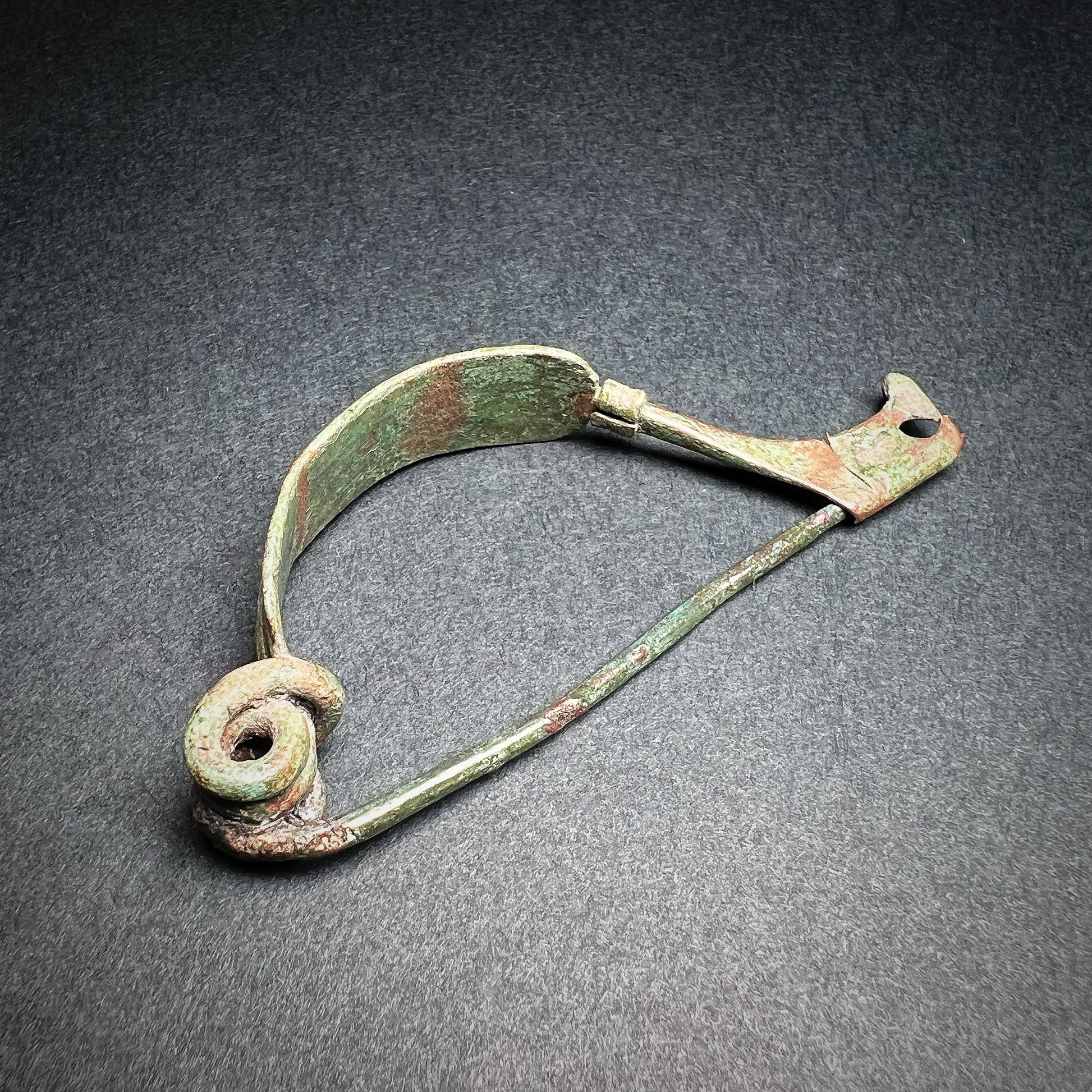La Têne Culture Bronze Fibula of the Jezerine type
La Têne Culture Bronze Fibula of the Jezerine type
Couldn't load pickup availability
La Têne Culture III, c. 35 BC - 1 BC, Western or Central Europe.
An exceptional and rare Jezerine-type fibula, featuring a four-coil spring with an internal chord. The bow is wide and flat, with a high, evenly arched ribbon-like design, adorned with grooves or beading along its length. This intricate decoration is complemented by a small ornamental knot of thin horizontal bands above the narrowed foot, which ends in a squarish pierced catch plate. Fibulae, plural for fibula, served as brooches or pins to fasten garments, typically worn at the right shoulder. Their designs were inspired by the safety-pin principle and came in a variety of forms. In ancient Rome and other Latin-speaking regions, the word fibula also referred to the fibula bone, as its shape was thought to resemble popular brooch designs. Beyond their practical use, fibulae were occasionally offered as votive gifts to deities.
Jezerine-type fibulae represent a fusion of Roman influence and Celtic craftsmanship. This style emerged around 35 BC and saw widespread use until approximately AD 10/20. They have been discovered across a broad geographical range, from the western Mediterranean to the Baltic, with a notable concentration in eastern Slavonia, Syrmia, and northern Serbia. This region, during the Late Iron Age, was home to the Scordisci, a political group mentioned in ancient sources.
The La Têne culture, spanning c. 480 - 50 BC, marked the height of Celtic power in Europe during the second phase of the Iron Age. Known for their hill forts, rich burials, and exceptional craftsmanship, the La Têne Celts were a highly stratified society with kings, Druids, warriors, farmers, and slaves. Fiercely warlike, their dominance in central Europe peaked in the 4th and 3rd centuries BC. However, by 50 BC, they were subjugated, facing incursions by Germanic tribes from the north and Roman forces from the south. This Jezerine fibula is a testament to the artistic and cultural sophistication of the La Têne Celts, reflecting both their craftsmanship and their interactions with neighboring civilizations.
Excellent condition. Wear consistent with age. Some surface scratches and corrosion. Fissure in the catch plate. Complete with original working pin. Beautiful greenish russet patina. Size approx. 6,5cm x 2,6 x 1,1cm.
Provenance: Swedish private collection.
For a similar examples see:
Brooch, The British Museum, Accession Number: 1868,1228.332 (https://www.britishmuseum.org/collection/object/H_1868-1228-332)
References and further reading:
Jezerine Fibula 125 B.C. - 40 A.D., NumisWiki - The Collaborative Numismatics Project, Forum Ancient Coins. (https://www.forumancientcoins.com/numiswiki/view.asp?key=Jezerine%20Fibula)
European Prehistory: A Survey (Interdisciplinary Contributions to Archaeology), Sarunas Milisauskas, 2012, p. 354.
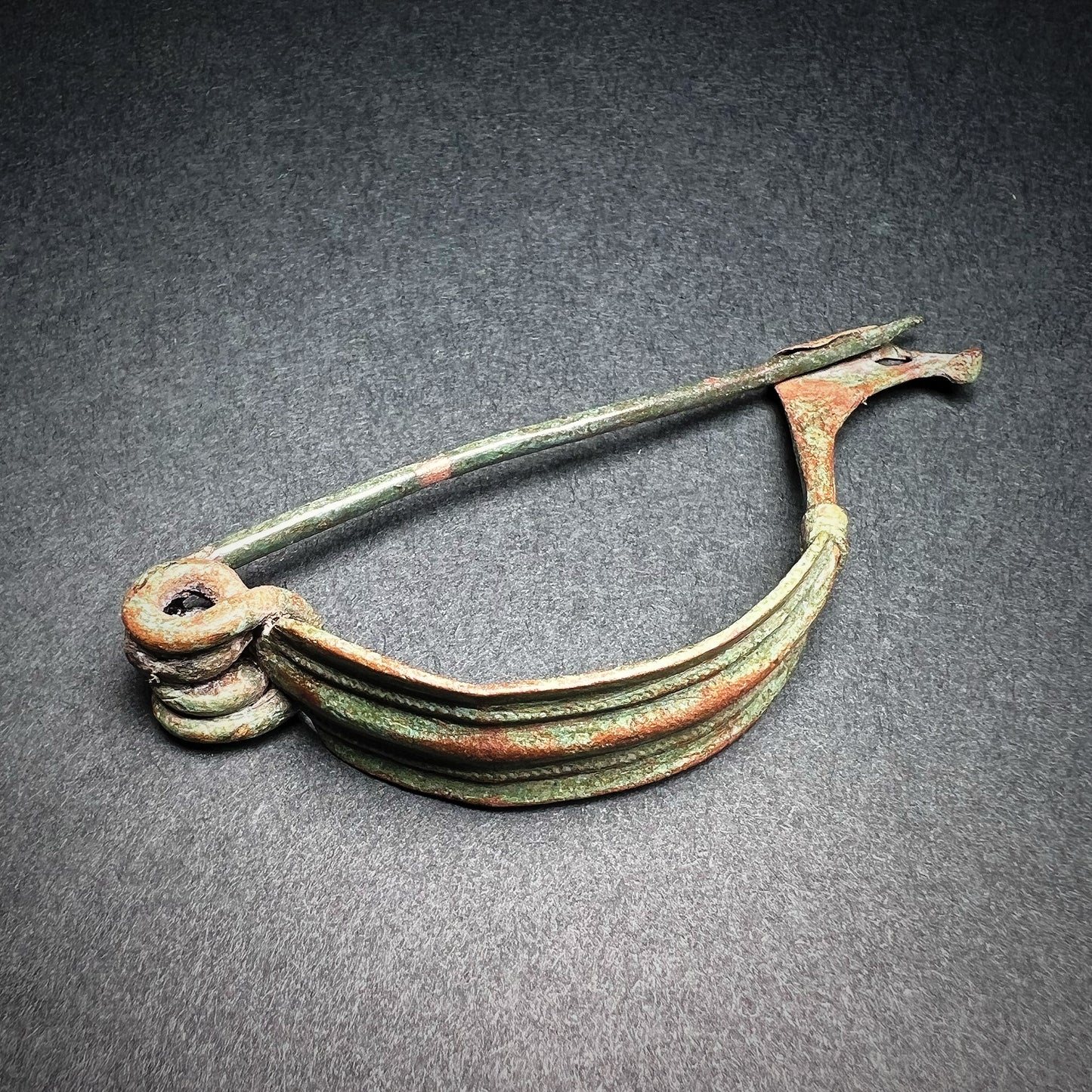
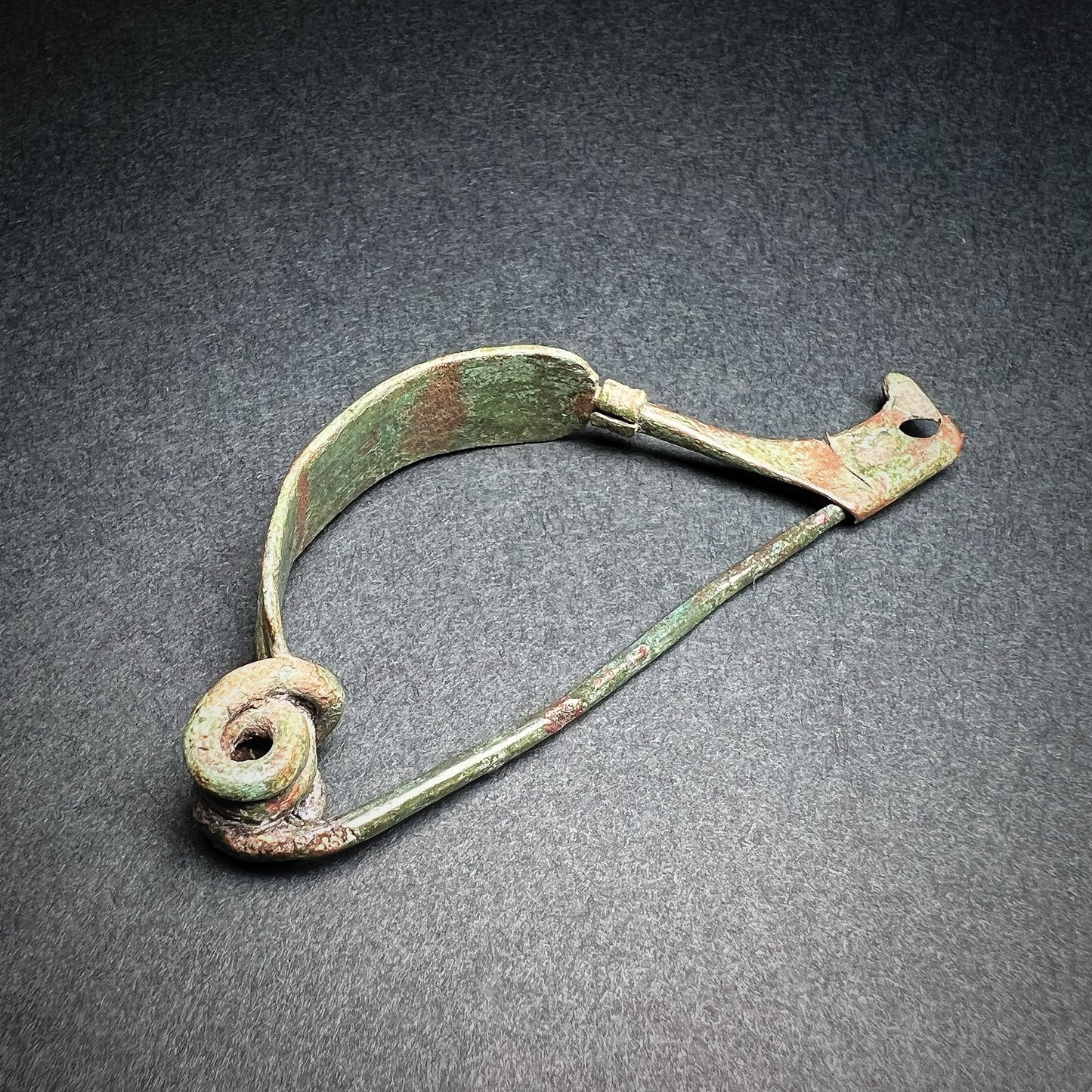
-
Shipping
The shipment will be prepared in the course of 3-5 days and dispatched via Posti Group Oyj or purchased item(s) can be picked up from our shop during the store's opening hours (Tarkk’ampujankatu 4, 00140, Helsinki, Finland). Within the Finland, all items are shipped via Posti Group Oyj unless otherwise requested. We pack the items carefully and mainly in recycled materials because we want to save nature. You will receive the tracking number for your items by e-mail.
-
Returns
Returns and exchange will be accepted within fourteen days (14) of receipt at the purchaser’s cost to include freight and packaging. Items must be returned in the same condition as when they were shipped, and will not be accepted if damaged or altered in any way. Please inform us via email (info@gotanmaailma.fi) or by calling +358408408352 before sending. We do not accept returns more than 14 days after delivery.
